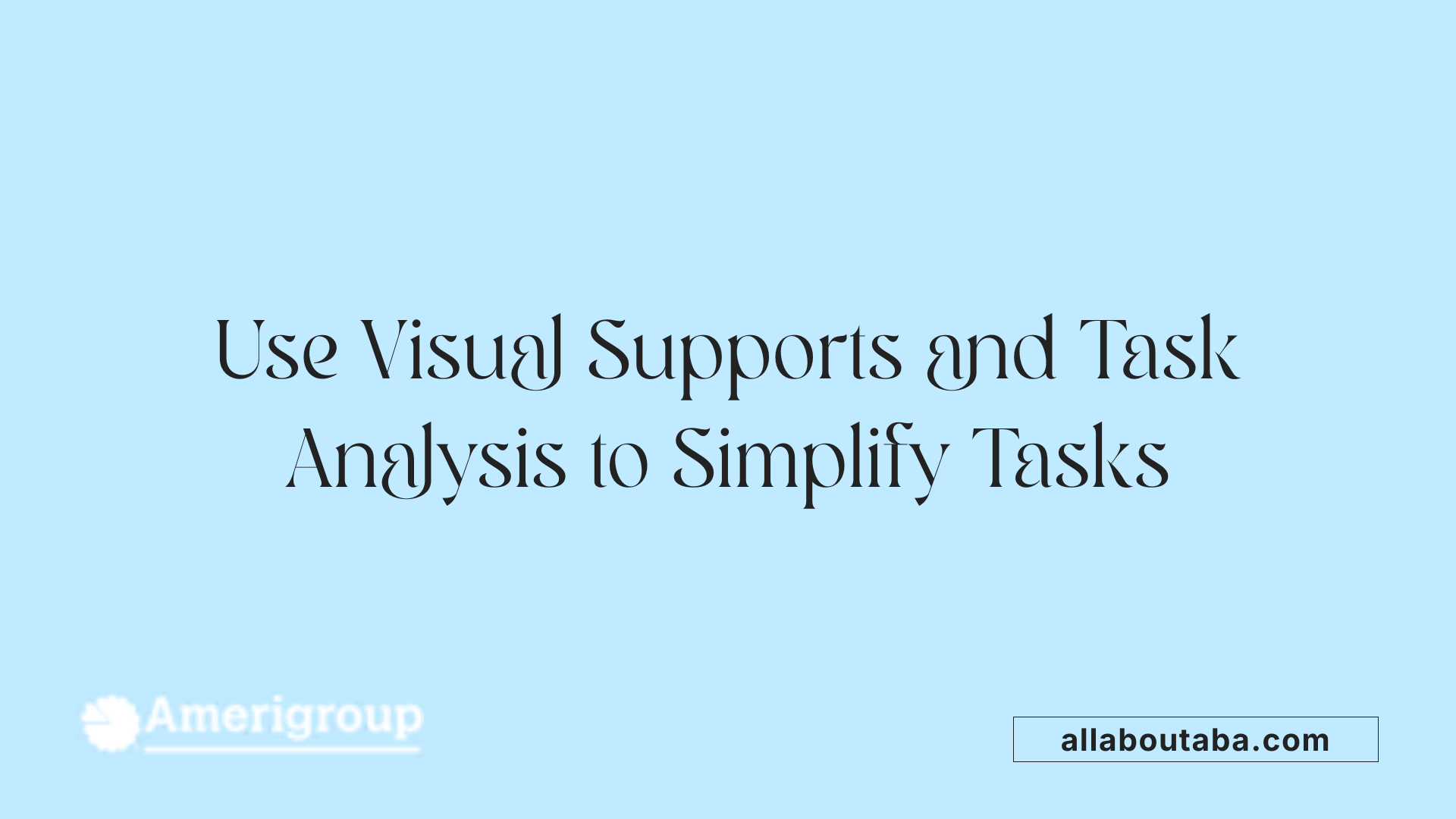Understanding the Challenges and Importance of Organizational Skills in Autism
Organizational skills are crucial for academic success and daily functioning, yet they often present considerable challenges for individuals with autism due to underlying difficulties with executive functioning. Teaching these skills through structured routines, visual supports, and technology can significantly empower autistic students, helping them manage tasks, reduce stress, and promote independence. This article explores effective strategies and practical approaches for teaching organizational skills tailored specifically for autism spectrum disorder.
The Role of Executive Function Difficulties in Autism and Organizational Challenges

Why do autistic individuals struggle with planning and organizational skills?
Autistic individuals often encounter challenges with executive functioning, a critical set of mental processes needed for planning, goal setting, and strategizing. This difficulty stems from several interrelated factors.
Executive Function Challenges in Autism
Executive functions include the ability to think ahead, organize tasks, and regulate behavior. For those on the autism spectrum, these functions can be impaired, making it harder to plan and keep track of activities.
Impact on Planning and Organizational Skills
These executive function issues manifest in everyday struggles with organizing assignments, time management, and following routines. For example, problems in strategizing might make breaking down large projects into smaller steps difficult, while difficulties in thinking ahead can lead to missed deadlines or lost materials.
Key Difficulties: Autistic Inertia, Sensory Sensitivities, Rigidity, and Time Management
Several specific challenges affect their organization skills:
- Autistic inertia: Difficulty initiating tasks even when they want to start.
- Sensory sensitivities: Overwhelming sensory input can distract or make routine tasks harder.
- Rigidity vs. flexibility: A preference for sameness can hinder adapting plans when situations change.
- Time management issues: Struggling to estimate or perceive time can cause problems prioritizing and scheduling tasks.
Understanding these factors highlights why tailored strategies are necessary to support autistic individuals in developing effective planning and organizational skills.
Establishing and Teaching Routines to Foster Organizational Skills

How do routines help autistic students develop organizational skills?
Teaching students with autism to follow structured routines helps develop organizational skills by creating habits that support executive functioning. These routines provide a predictable framework that enhances skills like planning, organizing, and managing tasks.
Importance of routines in habit formation
Routines help students develop consistent habits, which are crucial for improving executive functions. When students repeatedly follow the same procedures, such as locating homework or organizing materials, the behavior becomes automatic and less challenging.
Explicit teaching of procedures
Explicitly teaching routines involves showing students exactly how and where to find materials or homework. This direct instruction clarifies expectations and procedures, helping students understand and adhere to steps needed for organization.
Examples of routines: staging materials, recording assignments
Effective routines include staging materials before class and writing down assignments immediately. These habits minimize forgetfulness and keep students prepared. Organized workspaces and consistent recording of tasks support efficient task management.
Reducing stress and behavioral issues through routines
Clear and consistent routines reduce anxiety by making daily activities more predictable. This predictability decreases behavioral issues linked to confusion or frustration, allowing students to focus on learning with less stress.
Visual Supports and Task Analysis: Breaking Down Complexity

What visual strategies support planning and organizational skills in autism?
Visual supports are essential tools to aid autistic individuals in managing planning and organizational challenges. These supports include visual schedules that outline daily tasks, color-coded materials to differentiate subjects or project stages, and labeled bins or containers to keep items systematically arranged. Such visual cues simplify information processing and help minimize confusion or overwhelm.
Breaking down tasks into manageable steps (task analysis)
Task analysis involves decomposing larger or complex assignments into smaller, achievable steps. This approach enables students to tackle tasks incrementally, promoting confidence and reducing anxiety associated with overwhelming projects. For instance, a multi-step homework assignment might be segmented into distinct parts, such as reading instructions, gathering materials, completing sections, and reviewing work.
Making abstract concepts concrete with visual timers and music
Abstract concepts like time can be particularly challenging for autistic learners. Visual timers offer a clear representation of time passage, helping students better estimate and manage the duration of tasks. Additionally, incorporating music or auditory cues synchronized with time intervals can make time management more engaging and intuitive.
These strategies, grounded in visual and task-oriented approaches, effectively support planning and organization by making complex processes clearer and more accessible. They provide autistic students with practical methods to navigate daily routines and academic responsibilities, promoting skill development and reducing stress.
Organizing School Materials: Practical Paper-Based and Digital Methods

What strategies are effective for organizing school materials for autistic students?
Effective organization of school materials can make a significant difference for autistic students. One practical method is using color-coded binders or sections. Assigning a specific color to each subject helps students categorize and quickly locate their papers, reducing confusion and improving focus.
Another helpful strategy is establishing a 'work-in-progress' folder. This dedicated folder holds current assignments that need attention, ensuring tasks aren't misplaced and allowing students to prioritize their work.
For digital organization, creating labeled folders for each subject on devices helps keep electronic assignments and resources neatly sorted. Additionally, using email filters to manage incoming communications and submissions declutters inboxes and streamlines workflow.
A structured environment enhanced by visual cues such as color coding, labels, and clearly organized bins supports students' ability to maintain order. These visual supports reduce distractions and foster independence by providing immediate orientation cues.
Combining these paper-based and digital methods gives autistic students tangible ways to stay organized, manage their materials effectively, and navigate their school work with greater ease.
Teaching Time Management: From Recording Assignments to Using Planners
Recording assignments accurately
Helping autistic students develop strong time management skills starts with teaching them to record assignments meticulously. This habit ensures they know exactly what work is due and when, which reduces stress and forgetfulness. Routines like writing down assignments consistently are essential, as they lay the foundation for organization.
Estimating time and breaking down projects
Once assignments are clear, the next step is teaching students how to estimate the time each task will require. Educators can guide students in breaking larger projects into smaller, manageable steps, making overwhelming tasks more approachable. This stepwise approach fosters better planning and progress tracking.
Using planners as checklists and reminders
Planners serve as practical tools where students can list assignments alongside deadlines. Using planners as checklists helps students monitor completed tasks and upcoming deadlines, reinforcing positive habits. This method also provides visual cues that support executive functioning challenges typical in autism.
Developing effective time management routines
Consistency in applying these strategies—such as recording assignments promptly, estimating time, breaking down tasks, and checking planners daily—builds structured routines. These routines reduce behavioral issues caused by confusion or anxiety and improve organizational skills. Educators who model and reinforce these practices help students embrace effective time management as a lifelong skill.
Supporting Organizational Skills Through Digital Tools and Apps
Which digital tools support planning and organizational skills for autistic individuals?
Digital technology offers valuable support for enhancing planning and organizational skills in autistic individuals. Task management apps and digital calendars serve as essential tools by providing clear visual schedules and timely reminders. These features help users keep track of assignments and daily tasks, reducing forgetfulness and anxiety.
Specialized organizational apps such as Brain in Hand, Choiceworks, and First Then Visual Schedule are tailored to meet unique needs. Brain in Hand offers customizable support through step-by-step task guidance and coping strategies. Choiceworks integrates visual schedules that structure daily routines, while First Then Visual Schedule breaks down activities into manageable steps, making abstract concepts like time more concrete.
Leveraging these digital aids enables ongoing adaptation. Users can adjust plans dynamically and build organizational habits at their own pace. Moreover, technology fosters a growth mindset by encouraging continual practice and improvement of executive functioning skills. Embracing these tools not only supports present needs but also cultivates independence and confidence over time.
Integrating Behavioral Management and Collaborative Support for Success
How can behavioral management and collaboration enhance organizational skill teaching?
Behavioral classroom management strategies play a crucial role in enhancing organizational skills by encouraging positive behaviors and discouraging negative ones. Techniques such as reward systems and daily report cards help reinforce students’ focus and motivation, making it easier for children with ADHD and autism to engage with organizational training.
Organizational training complements this by teaching children essential skills like time management, planning, and organizing school materials. This dual approach reduces distractions and supports optimal learning conditions.
Close collaboration among teachers, parents, and healthcare providers further strengthens these efforts. Consistent communication and shared strategies ensure that students receive uniform support both at school and home, promoting better outcomes.
Moreover, legal frameworks such as the Individuals with Disabilities Education Act (IDEA) and Section 504 of the Rehabilitation Act guarantee access to special education services and accommodations. These provisions enable tailored interventions that address organizational challenges faced by children with ADHD and autism, ensuring they have the resources necessary for success.
By integrating behavioral management, organizational training, collaboration, and legal supports, a comprehensive foundation is built to help children develop and maintain vital organizational skills.
Empowering Autistic Students: A Multifaceted Approach to Organizational Skills
Developing organizational skills in autistic students requires a comprehensive approach combining explicit teaching of routines, visual supports, practical organization methods, time management training, and technology integration. When paired with behavioral strategies and collaborative support from educators, parents, and healthcare providers, these strategies promote independence and academic success. Ongoing adaptation and reinforcement foster a growth mindset, enabling autistic individuals to continually improve their executive functioning and thrive in their educational journeys.







